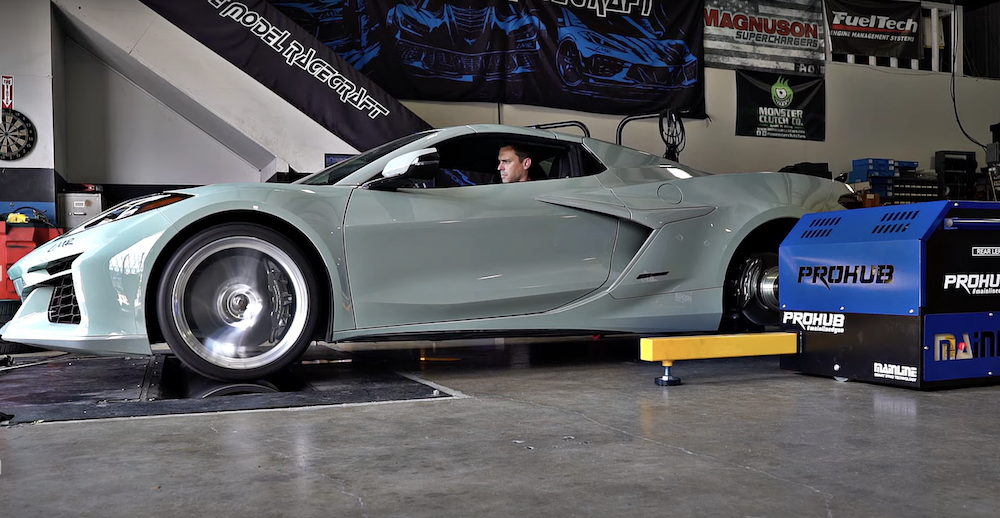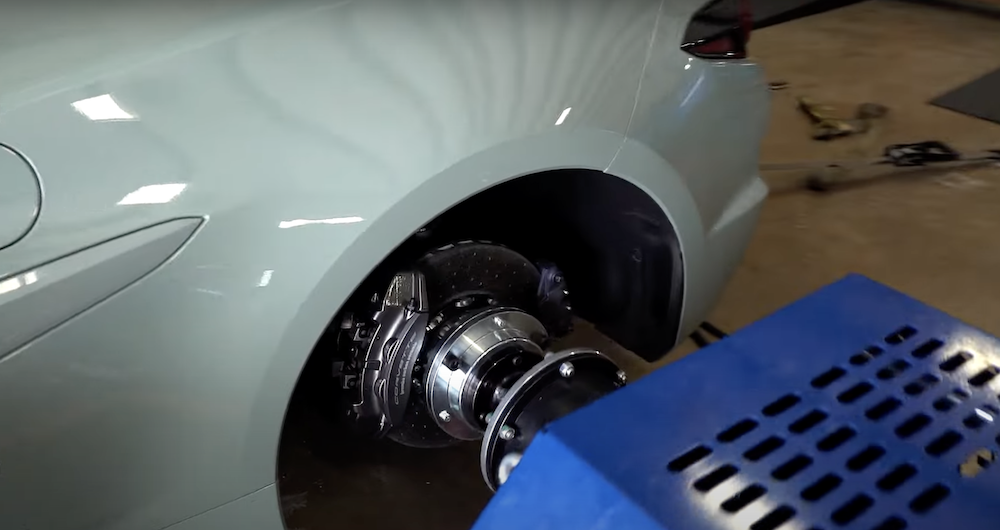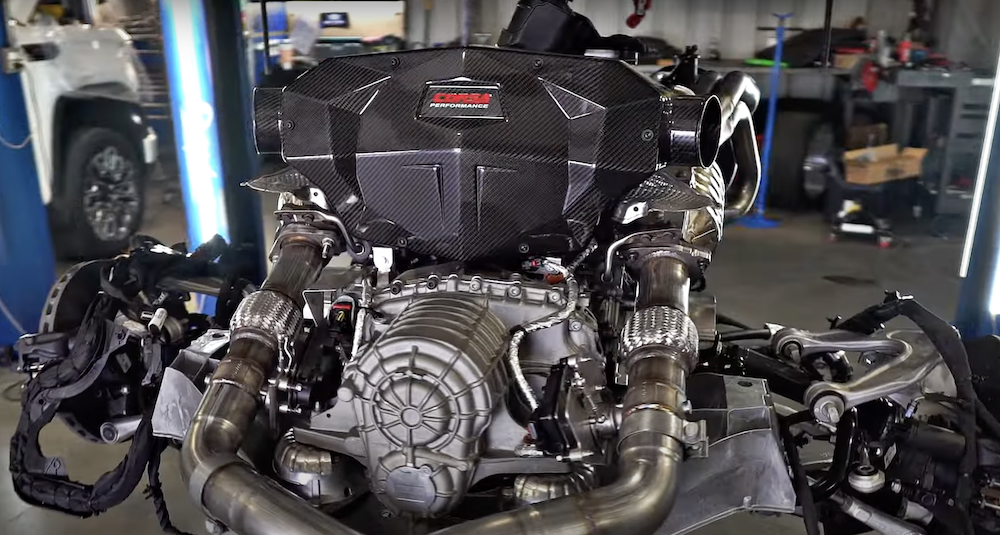Here’s What Happens When You Run the Corvette E-Ray on Two Dynos at Once
This Corvette E-Ray produced some interesting results when run on two dynos at once – both in stock form and with a cam and head package.
The Corvette E-Ray is undoubtedly an impressive machine, not to mention a relatively important one in the grand scheme of things, given the fact that it’s the first hybrid Corvette to exist. This is no fuel-sipper, however, as GM paired the Stingray’s 6.2-liter LT2 V8 with an electric motor up front to generate a combined 655 horsepower and 592 pound-feet of torque, as well as make the E-Ray all-wheel-drive – another first for the Corvette in general. Recently, the folks at Late Model Racecraft decided to take advantage of that AWD setup to perform a rather unique test.
LMR just so happens to have both a DynoJet chassis dyno and a Mainline Pro Hub Dyno in its possession, as well as a Corvette E-Ray that it wanted to dyno test. Thus, it had an interesting thought – what if it strapped the E-Ray to both of them, at the same time, to gain some insights into how much power is actually making it to the tires at each end, rather than both at once?
GM says that the LT2 itself cranks out 495 horsepower, with the electric motor adding around 160, but when LMR hooked up both ends, it produced some varying results. The first run generated 392 horsepower at the rear wheels, though LMR notes that its hub dyno tends to be a little stingy. The e-motor actually came pretty close to its official rating at 152 horsepower, though at speeds over 90 mph, it only generated around 55 horsepower – meaning that its best use is for lower end, stoplight-to-stoplight acceleration.
Of course, LMR doesn’t leave its cars stock, and that isn’t the case with this Corvette E-Ray, either. Rather, it was subsequently treated to the company’s performance package that consists of an upgraded cam and heads, a cold-air intake, headers, and exhaust, which lifted output from the gas motor up to 465 rear wheel horsepower, which is a solid gain of 73 horsepower. Even better, the LT2 continues to pull to 7,000 rpm with these upgrades, where the stock setup tends to taper off as it nears 6,000 rpm.
Better yet, this Corvette E-Ray sounds pretty incredible following those upgrades, and it’s blazingly quick, to boot. Perhaps not quite as quick as some boosted applications we’ve seen so far, but for those that want to stick with a naturally-aspirated setup, it should certainly hit the mark.



